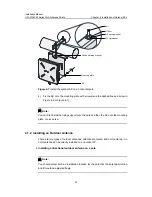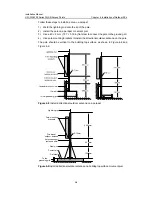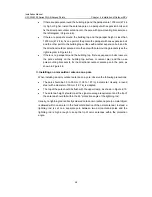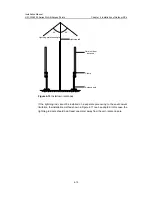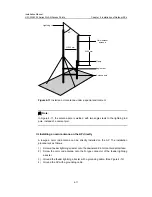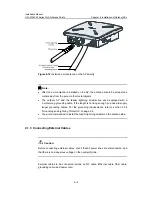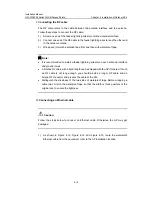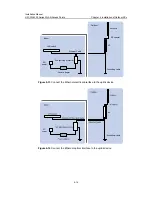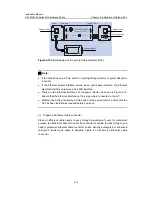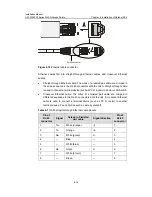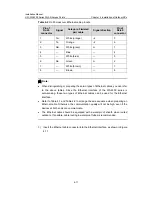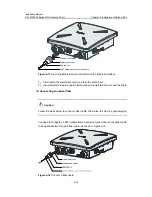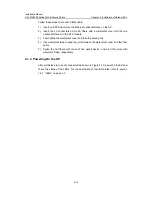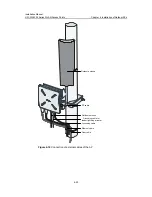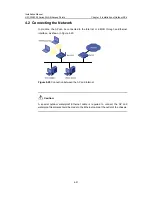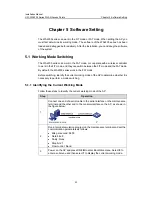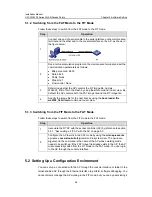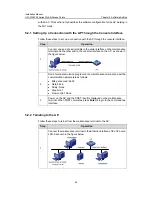
Installation Manual
H3C WA2200 Series WLAN Access Points
Chapter 4 Installation of Outdoor APs
4-9
z
If there are parapets around the building top and the parapets are 1200 mm (47.24
in) high or higher, install the antenna pole on a parapet with expansion bolts and
fix the directional outdoor antenna onto the pole with pole-mounting brackets (see
the left diagram in Figure 4-8).
z
If there are parapets around the building top and the parapet height is less than
1200 mm (47.24 in), fix one point of the pole to the parapet with one expansion bolt
and the other point to the building top surface with another expansion bolt, and fix
the directional outdoor antenna onto the pole with pole-mounting brackets (see the
right diagram in Figure 4-8).
z
If there is no parapet around the building top, first use expansion bolts tosecure
the pole vertically on the building top surface or cement pier, and then use
pole-mounting brackets to fix the directional outdoor antenna onto the pole, as
shown in Figure 4-9.
II. Installing an omni outdoor antenna on a pole
When installing an omni outdoor antenna on a pole, observe the following precautions:
z
The pole should be 35 to 50 mm (1.38 to 1.97 in) in diameter. Usually, a round
steel with a diameter of 50 mm (1.97 in) is adopted.
z
The top of the pole should be flush with the upper clamp, as shown in Figure 4-10.
z
The antenna height should meet the signal coverage requirement and the tip of
the antenna should fall within the 45° protection angle of the lightning rod.
Usually, no lightning rod is directly soldered onto an omni antenna pole (no metal object
is allowed within one meter in the horizontal direction of the omni antenna). Instead, a
lightning rod is set on a separate pole between two omni antenna poles and the
lightning rod is high enough to keep the tip of omni antennas within the protection
angle.













